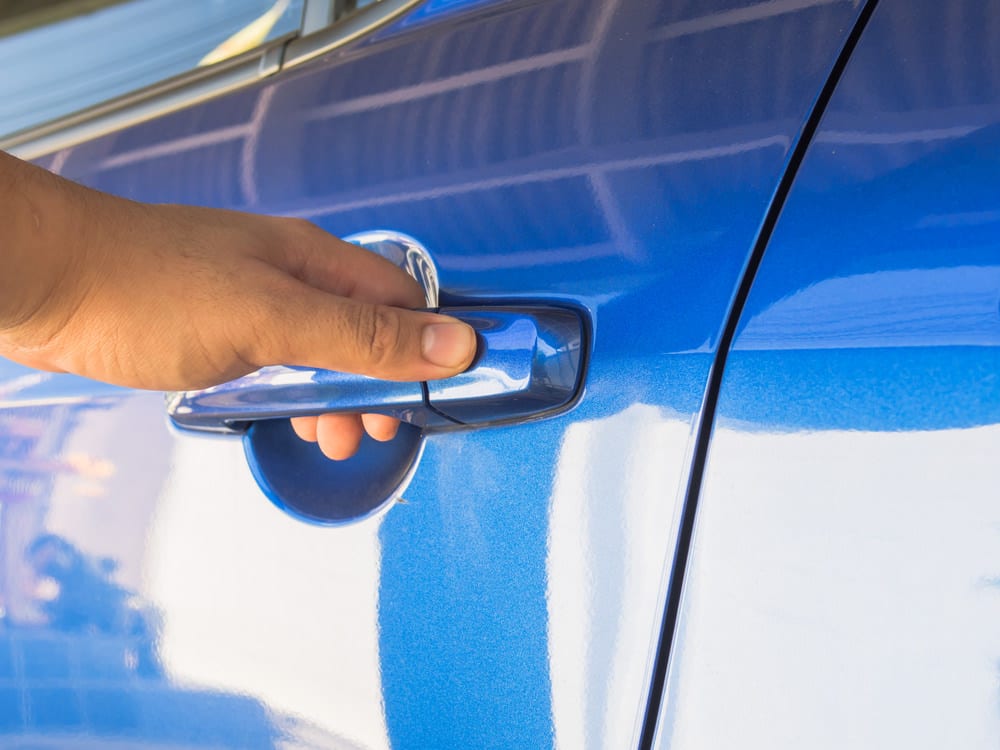

When small digital systems appeared in the 1980s, the car industry was quick to pick up and use them. In short order, Ford developed the first computer-controlled keypad door locking system in about 1980. A few years later, small radio transmitters were integrated with car electronics and key fob-controlled keyless car entry systems appeared. Later, instead of using a pushbutton key fob to open the door locks, small radio transceivers were set up to open doors when they received the right signal from a small transducer chip. From this technology, a variation sprang up that made its way into the auto fleet called touch-sensitive locking.
What is touch-sensitive locking?
Touch-sensitive systems combine the best features of keyed and keyless systems, including transducer-based systems. At first it was primarily used in high-end, upscale vehicles. Today, however, nearly every automaker offers a form of touch-sensitive door locking. For example, Toyota uses the Smart Key system in its line, while Nissan has implemented its Intelligent key system. Mercedes-Benz calls its touch-sensitive system the Keyless Go system while BMW uses the Magic Key.
Whatever the name, today touch-sensitive door locking appears on models of nearly every major automaker. Specifically, it appears on vehicles made by:
- Ford
- BMW
- Audi
- Volkswagen
- GM
- Fiat Chrysler Automotive
- Honda
- Infiniti
- Lexus
- Nissan
- Mercury
- Mazda
- Mitsubishi
- Subaru
- Tesla
Touch-sensitive door Locking systems explained
Touch-sensitive door locking systems rely on touch-sensitive areas located on the car’s body. A press is all that it takes to activate a touch-sensitive system. On the other hand, keyless remote systems, the standard key fob-controlled locking system, rely on separate key fobs that generate the codes used to open doors.
Like a remote keyless system, a touch-sensitive system generates a code that is sent to the car’s control computer module. Another code is generated and sent to the car’s security system control module. That module determines which door lock to activate and sends to the car’s security system control module that then activates the proper door lock. At this point, a door-mounted solenoid fires, energizing actuator rod. The actuator rod, in turn, exerts pressure on the door lock trigger disk, opening the lock jaws. The actuator rod’s motion also energizes a pusher bar the causes the door to pop open.
Using touch-sensitive door locks
You can quickly determine if a car has touch-sensitive door locks installed. Take a look at the driver-side door. If no handle or lock are visible, then you can be sure that the car has a touch-sensitive lock installed. When you first look at the car, you will need the instructions. The instructions should not only include the two steps you need to activate the door lock, but also include a detailed graphic showing you the location of the touch-sensitive area. Since the touch-sensitive area is flush with the body, you will not see it easily.
A touch-sensitive door lock relies on special sensors and wiring. The wiring and sensors create a particular area in the door’s surface that you open by pressing it with one or two fingers. Once you have set the sequence in motion, the door should just pop open. The pressure points may be, but are not limited to, the area near the “standard” car door handle at the door edge.
Touch-sensitive areas that can be installed
- At the center of the window edge
- As part of rear window glass
- At the top of the windshield
- On the trunk lid
Touch-sensitivity can be used for a variety of features. For example, you can use it to activate the windows by pressing an area on the doorframe, for example. Or, you can use it to set new seat positions by pressing an area on the lower seat frame. Any feature that you can either activate with a key fob or transducer (transmitter/receiver) can also be activated using touch sensitivity.
Long-term touch-sensitivity issues
Over the long term, touch-sensitive door locks can be affected by a number of issues. The issues include:
- Connection failure: The connections to the wire-loom required can easily wear over time due to the environment.
Because of the number of connections that are required so that an area can be finely defined (the greater the number of pressure points, the better the system works; the number of points is defined by the intersections on the touch-sensitive area’s surface), it is possible that, given the hostile environment in which they work (a door’s interior or car’s body surface) connection points can wear, causing failure of the touch-sensitivity over time).
Wire-loom failure: Because touch-sensitive door locking systems require extra wiring within the door, it is possible that over time repeated door-opening and closing will strain the wire looms containing the system wires, causing them to loosen or break.
Software failure: Because touch-sensitive door locking systems rely on software support for proper operation, it is possible that over time the software stored in system memory can degrade so that the touch-sensitive system may fail. The only way to prevent this is to keep your system software up to date or ensure that it is kept up to date by your mechanic.
You can ensure long-term reliable usability be ensuring that your car’s body surfaces are cleaned regularly. Likewise, door frames, body wiring inlets and gimlets and underhood-mounted portions of touch-sensitive systems have to be regularly maintained and cleaned, as well.



